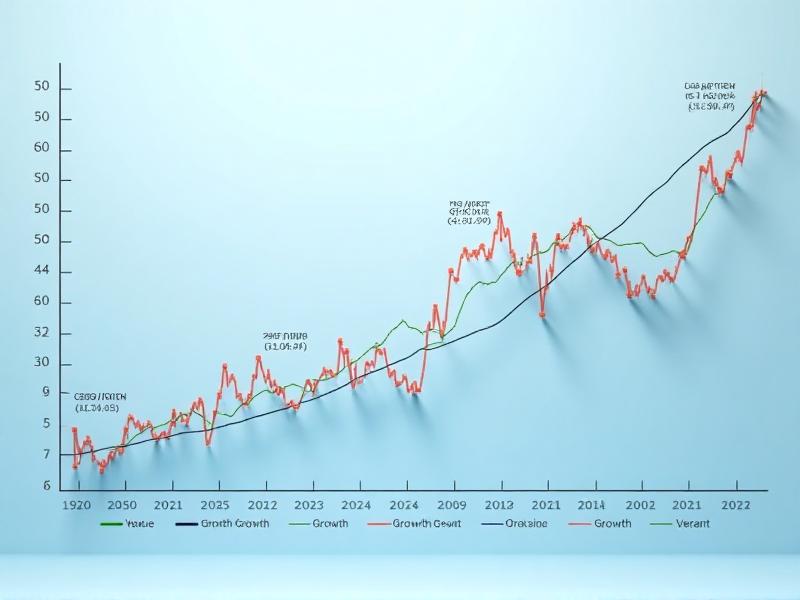
How to Use Blockchain for Identity Verification

How to Invest in Bonds for Stability and Income

Emergency Funds 101: Why and How to Build One

The Financial Impact of Social Comparisons
How to Invest in Value Stocks for Long-Term Gains
Apr 24, 2025 By Juliana Daniel
Understanding Value Stocks
Value stocks are shares of companies that appear to trade for less than their intrinsic value. These stocks are often characterized by lower price-to-earnings (P/E) ratios, higher dividend yields, and a strong balance sheet. Investors who focus on value stocks aim to buy these undervalued shares and hold them until the market corrects the mispricing, leading to long-term gains.
To identify value stocks, investors often look for companies with solid fundamentals but whose stock prices do not reflect their true worth. This could be due to temporary setbacks, market overreactions, or simply being overlooked by the majority of investors. By conducting thorough research and analysis, investors can uncover these hidden gems and capitalize on their potential for growth.
The Principles of Value Investing
Value investing is rooted in the principles established by Benjamin Graham and David Dodd in the 1930s. The core idea is to purchase stocks that are trading below their intrinsic value, providing a margin of safety. This approach requires patience, discipline, and a long-term perspective, as it may take time for the market to recognize the true value of these stocks.
Key principles of value investing include focusing on companies with strong fundamentals, such as consistent earnings, low debt, and a competitive advantage. Investors should also be wary of market noise and emotional decision-making, sticking to their analysis and investment thesis even when the market seems to be moving against them.
How to Identify Value Stocks
Identifying value stocks involves a combination of quantitative and qualitative analysis. Quantitative metrics such as P/E ratio, price-to-book (P/B) ratio, and dividend yield are commonly used to screen for potential value stocks. However, it's also important to consider qualitative factors like the company's management team, industry position, and growth prospects.
Investors should also look for companies with a history of consistent performance and a clear path to future growth. This might include companies that are undergoing a turnaround, have a strong brand, or operate in a stable industry. By combining these factors, investors can build a portfolio of value stocks with the potential for long-term gains.
Building a Value Stock Portfolio
Building a value stock portfolio requires careful selection and diversification. Investors should aim to include a mix of companies from different industries and sectors to reduce risk. It's also important to consider the size of the companies, as small-cap, mid-cap, and large-cap stocks each have their own risk and return profiles.
Once the portfolio is established, it's crucial to monitor the performance of the stocks and make adjustments as needed. This might involve selling stocks that have reached their target price or reallocating funds to new opportunities. The goal is to maintain a balanced portfolio that aligns with the investor's long-term objectives.
The Role of Patience in Value Investing
Patience is a cornerstone of value investing. Unlike growth investing, which often focuses on rapid price appreciation, value investing requires a long-term perspective. Investors must be willing to hold onto their stocks through market fluctuations and wait for the market to recognize the true value of their investments.
This patience can be challenging, especially during periods of market volatility or when other investment strategies are yielding quick returns. However, history has shown that value investing can lead to substantial long-term gains for those who stay committed to their strategy and avoid the temptation to chase short-term trends.
Common Mistakes to Avoid in Value Investing
While value investing can be highly rewarding, it's not without its pitfalls. One common mistake is falling into the "value trap," where a stock appears to be undervalued but is actually facing fundamental issues that prevent it from recovering. To avoid this, investors must conduct thorough research and ensure that the company has a viable path to growth.
Another mistake is overconcentration in a single stock or sector, which can expose the portfolio to unnecessary risk. Diversification is key to mitigating this risk and ensuring that the portfolio can weather market downturns. Additionally, investors should avoid making decisions based on emotions or short-term market movements, sticking instead to their long-term investment strategy.
The Future of Value Investing
The future of value investing looks promising, as technological advancements and increased access to information have made it easier for investors to identify undervalued stocks. However, the rise of passive investing and index funds has also created new challenges, as these investment vehicles often favor growth stocks over value stocks.
Despite these challenges, value investing remains a viable strategy for those willing to put in the effort to uncover hidden opportunities. As markets continue to evolve, investors who stay true to the principles of value investing and adapt to changing conditions will be well-positioned to achieve long-term success.

How to Invest in Gold and Precious Metals

Discovering the Charm of Deià: A Travel Guide to Mallorca’s Hidden Gem

How Blockchain is Revolutionizing Finance

How to Invest in Value Stocks for Long-Term Gains

How to Use ETFs for Environmental, Social, and Governance (ESG) Investing

What Is A Planner For Retirement?

The Role of Artificial Intelligence in Portfolio Management

Your Perfect Weekend Guide to South Beach, Miami
Advertisement
